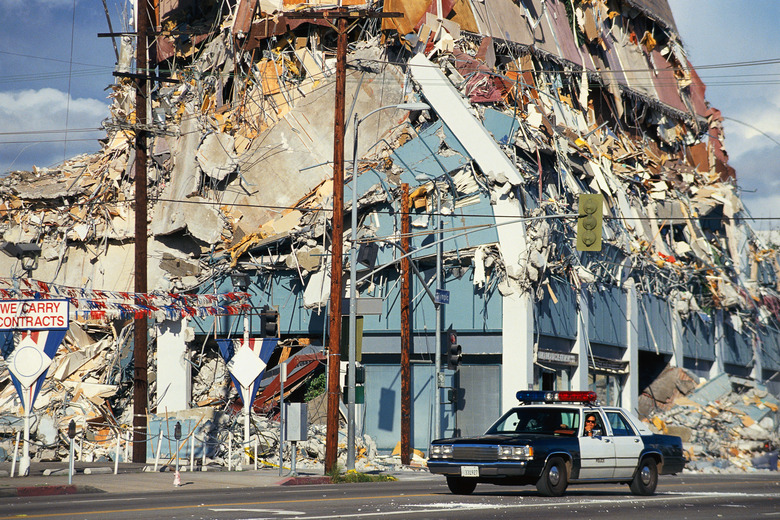What Happens To The Earth's Crust After An Earthquake?
After the Earth stopped shaking in March of 2013, scientists discovered that the planet's rotation had sped up, causing the length of a day to increase. This occurred because the powerful Japanese quake redistributed the Earth's mass. Not all earthquakes affect the planet in such a dramatic way, but they do cause changes to the Earth's crust.
Tectonic Plates in Motion
Tectonic Plates in Motion
The Earth's surface consists of many pieces that slide past each other continuously. Also known as tectonic plates, these pieces have boundaries that contain faults. Because a tectonic plate's edge is rough, it gets stuck when it rubs against another plate. This sticking causes the edge to remain stationary while the rest of the plate keeps moving. When the plate moves far enough, the edge gets unstuck and an earthquake occurs as stored energy within the moving plates releases.
Effects on Earth's Surface
Effects on Earth's Surface
High energy seismic waves move outward in all directions away from a fault when an earthquake occurs. These waves make the ground shake below and above the surface. The San Andreas Fault divides two tectonic plates in California. Contrary to popular belief, California won't sink into the ocean if a major quake occurs. However, landslides can occur and quakes reshape the coastline.
Crustal Deformation
Crustal Deformation
Another common belief is that the ground can open up and swallow you when an earthquake occurs. This can't happen because faults do not open up. However, the energy of an earthquake can deform the ground and cause settling. When that occurs, fissures in the ground can appear. Crustal deformation occurs before, during and after an earthquake. The United States Geological Survey's Earthquake Hazards Program measures this type of deformation frequently.
Interesting Earthquake Facts
Interesting Earthquake Facts
Because California's San Andreas Fault moves about 2 inches per year, scientists project that San Francisco will sit next to Los Angeles in about 15 million years. Tectonic plate motion does more than make the Earth tremor. Plate motion creates mountains such as the Andes range in South America. Although California has only a few hundred earthquakes with magnitude greater than 3.0 per year, about 10,000 earthquakes actually occur during a year. Antarctica has icequakes where sheets of ice shake instead of the ground.
Cite This Article
MLA
Lee, Kevin. "What Happens To The Earth's Crust After An Earthquake?" sciencing.com, https://www.sciencing.com/happens-earths-crust-after-earthquake-16267/. 24 April 2017.
APA
Lee, Kevin. (2017, April 24). What Happens To The Earth's Crust After An Earthquake?. sciencing.com. Retrieved from https://www.sciencing.com/happens-earths-crust-after-earthquake-16267/
Chicago
Lee, Kevin. What Happens To The Earth's Crust After An Earthquake? last modified March 24, 2022. https://www.sciencing.com/happens-earths-crust-after-earthquake-16267/
